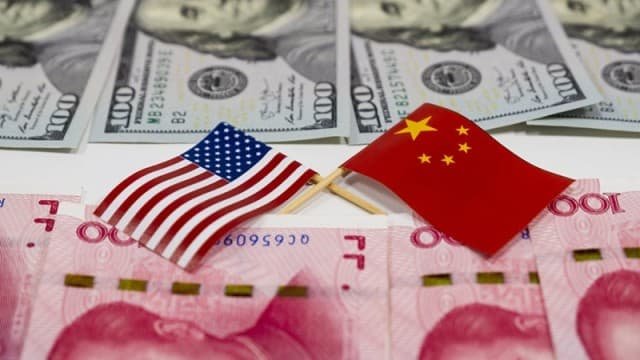After more than six years of negotiations, more than a dozen countries in Asia Pacific are now aiming to sign what would be the world’s largest trade agreement in 2020.
The deal, called Regional Comprehensive Economic Partnership or RCEP, involves all 10 countries from the Association of Southeast Asian Nations (ASEAN) bloc and five of its major trading partners: Australia, China, Japan, New Zealand and South Korea.
Together, the 15 countries make up close to one-third of the world population and global gross domestic product, according to a Reuters report. That’s larger than other regional trading blocs such as the European Union and the United States-Mexico-Canada Agreement, or USMCA.
Read More: Donald Trump: Trade talks moving along ‘very nicely’, but deal has to be right
The mega-deal started with 16 countries but India decided not to join the trade pact over concerns that it would hurt the South Asian country’s domestic producers.
What will RCEP do?
The final text with details of the trade agreement will go through legal reviews before being signed and released.
Media and analyst reports have said RCEP is primarily beneficial for goods trade because it will progressively reduce tariffs on many products. In addition, the deal will allow businesses to sell the same goods within the bloc but do away with the need to fill out separate paperwork for each export destination, Reuters reported.
Deborah Elms, executive director at consultancy Asian Trade Centre, told Reuters that would help Asian producers to sell more of their products to the rest of the region.
India’s role
India, involved in RCEP negotiations from the start, declined to join the trade pact over concerns that the deal would hurt its domestic producers. India’s apprehension toward the deal had been one of the main hurdles in recent RCEP talks.
Some RCEP members, such as Japan, considered New Delhi’s participation crucial “both for economic reasons and as another counterweight to China,” according to analysts from risk consultancy Eurasia Group.
India is Asia’s third-largest economy and a large consumer market.
But the remaining 15 countries are still expected to bring RCEP into force, according to another consultancy, The Economist Intelligence Unit.
“Without India, RCEP will be less significant, but its path to implementation has become much smoother,” the EIU said in a report.

सोने-चांदी में आज छोटे दायरे में कारोबार हो रहा है। घरेलू बाजार में कीमतों में गिरावट के बाद थोड़ी खरीदारी निकली है।
सोने-चांदी में आज छोटे दायरे में कारोबार हो रहा है। हालांकि, अंतरराष्ट्रीय बाजार में कीमतें 3 महीने के निचले स्तर पर बनी हुई हैं। अमेरिका-चीन में डील को लेकर आशंका से कीमतों को आज थोड़ा सपोर्ट मिला है। घरेलू बाजार की बात करें तो कीमतों में गिरावट के बाद थोड़ी खरीदारी निकली है। खरीफ फसलों की आवक बढ़ने से ग्रामीण मांग को सपोर्ट मिला है।
इसके अलावा बुलियन मार्केट में एक ट्रेंड और देखने को मिल रहा है वो ये है कि नकदी के किल्लत के चलते सोने को गिरवी रखने का प्रचलन बढ़ा है। आज इस खाश शो में इन्ही खास मुद्दों पर सीएनबीसी-आवाज़ के साथ Gem & Jewellery Trade Council Of India के प्रेसिडेंट शांतिभाई पटेल, Heeralal Motilal Saraf के संदीपन बड़जात्या और Nirmal Bang Commodities के कुणाल शाह बातचीत करेंगे।
अमेरिका और चीन के बीच डील को लेकर फिर आशंका पैदा होने से कच्चे तेल की कीमतों पर दबाव है। ब्रेंट के दाम 62 डॉलर के नीचे फिसल गए हैं वहीं MCX पर कच्चा तेल 0.75 प्रतिशत गिरा है। अमेरिकी राष्ट्रपति डोनाल्ड ट्रंप ने कहा है कि चीन के साथ बात ठीक ढंग से चल रही है लेकिन अमेरिका तभी डील करेगा जबकि वो उसके हित में होगी। ट्रंप के इस बयान से कच्चे तेल पर दबाव पड़ा है।
बेस मेटल्स में भी आज ज्यादातर कमजोरी देखने को मिल रही है। US-चीन डील को लेकर अनिश्चितता से कीमतों पर दबाव है। निकेल और जिंक में सबसे ज्यादा कमजोरी है।
एग्री कमोडिटीज की बात करें तो खाने के तेलों में आज मजबूती देखने को मिल रही है। मलेशिया में पॉम तेल का उत्पादन घटने और एक्सपोर्ट बढ़ने के कारण MCX पर CPO के दाम करीब 1.5 प्रतिशत बढ़े हैं जिससे सोया तेल को भी सहारा मिल रहा है। वहीं नई फसल की आवक बढ़ने से कपास खली और कॉटन की कीमतों पर दबाव है।
सोना-चांदी छोटे की कीमतों को US-चीन डील को लेकर अनिश्चितता से सहारा मिला है। वहीं ग्लोबल इकोनॉमी में सुस्ती की आशंका से सहारा मिला है। कॉमेक्स पर सोना-चांदी 3 महीने के निचले स्तर पर कारोबार कर रहा है।
सोने की मांग पर नजर डालें तो कीमतों में गिरावट के बाद घरेलू मांग सुधरी है। वहीं खरीफ फसलों की आवक से डिमांड में सुधार हुआ है। इस बीच सोने पर डिस्काउंट 5 महीने के निचले स्तर पर पहुंच गया है।